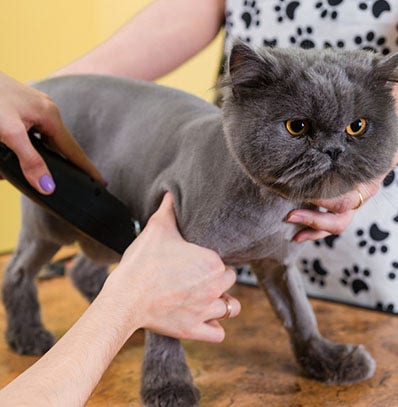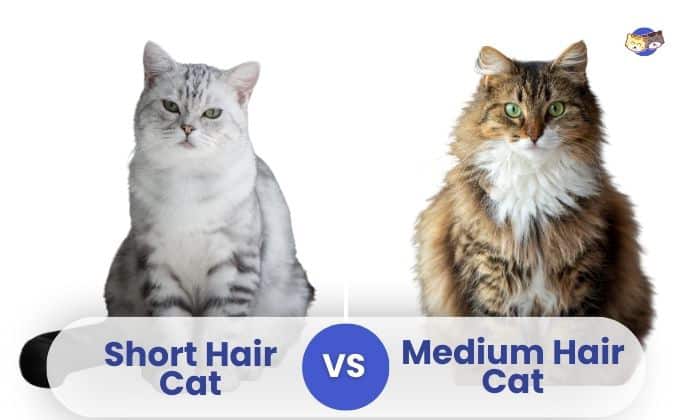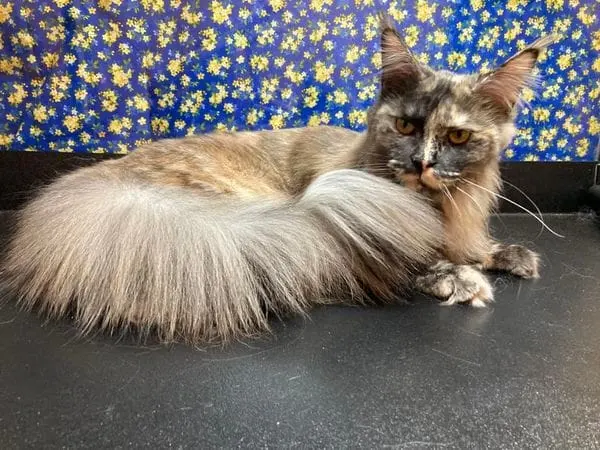If you have a long-haired cat, you may know the struggle of keeping their coat looking purrfect. Long-haired cats require regular grooming to prevent mats, tangles, and shedding. But grooming your feline friend can also be a bonding experience and a way to show them love and care. In this article, we will discuss how to groom a long-haired cat and share some tips and tricks to make the process easier for both you and your furry companion.
1. Pre-Grooming Preparation: Setting the Stage for Success

Before you begin grooming your long-haired cat, it's important to set up a comfortable and stress-free environment for both of you. Here are some key steps to follow before you start grooming:
Gather All Necessary Items
Gathering all the necessary grooming tools beforehand will save you time and hassle. Here are some basic items you will need:
- A sturdy brush or comb specifically designed for long-haired cats
- Cat-friendly shampoo and conditioner
- Nail clippers or a nail file
- Ear cleaning solution and cotton balls
- Towels
- Treats (to reward your cat and make the experience more enjoyable)
Choose the Right Time and Place
Choose a quiet and calm location that is free from distractions to groom your long-haired cat. This could be a dedicated grooming area in your home or even a quiet corner of a room. Make sure to choose a time when your cat is relaxed and not too playful or agitated.
2. Brushing Your Long-Haired Cat: The Key to a Healthy Coat

Brushing is an essential part of grooming a long-haired cat. Not only does brushing remove dirt, debris, and loose hair from your cat's coat, but it also helps distribute natural oils, preventing matting and promoting a healthy and shiny coat. Here's how to brush your long-haired cat effectively:
Types of Brushes for Long-Haired Cats
There are various types of brushes available, but the best ones for long-haired cats are slicker brushes or wide-toothed combs. These tools work well on thick and long coats, removing tangles and loose hair without hurting your cat's skin.
The Brushing Technique
Start by brushing your cat's back and sides in the direction of hair growth. Be gentle and use short strokes to avoid pulling on any mats or tangles. Once you have brushed the entire body, move onto the legs, stomach, and tail. Make sure to pay attention to sensitive areas like under the belly and the armpits, where mats can easily form. If you encounter any mats or tangles, use your fingers or a mat splitter (a special tool designed for detangling mats) to gently loosen them before brushing through them with the comb or brush.
3. Bathing Your Long-Haired Cat: Tips for a Clean and Happy Cat

Bathing a cat can be a daunting task, especially if they are not used to it. However, bathing is crucial for long-haired cats, as it helps remove dirt and excess oils from their coat, preventing matting and keeping them clean. Here's how to bathe your long-haired cat successfully:
Preparation is Key
Before bathing your cat, make sure to brush out any mats and tangles. This will help prevent them from getting worse during the bath. Also, place a towel on the bottom of the sink or tub to give your cat something comfortable to stand on. Fill the sink or tub with lukewarm water (not too hot or cold), and keep all necessary items (shampoo, conditioner, and towels) within reach.
The Washing Process
Gently place your cat in the water, supporting their body with one hand and using the other to wet them completely. Use a cat-friendly shampoo (avoid using human products, as they can be too harsh for your cat's skin) and lather it into their coat, avoiding the face and ears. Rinse thoroughly and repeat with conditioner if desired. Once you are done washing, wrap your cat in a towel and gently pat them dry, making sure to remove any excess water from their coat.
4. Nail Care: Keeping Your Cat's Claws Trimmed and Healthy

Long-haired cats also need regular nail care to keep their claws healthy and prevent them from becoming too long or sharp. Here's how to trim your cat's nails safely:
Choosing the Right Tools
There are various types of nail clippers available, including guillotine-style clippers and scissor-style clippers. Choose the one that you are most comfortable using. Additionally, make sure to have some styptic powder nearby in case you accidentally cut the quick (the pink part of the nail that contains blood vessels).
The Trimming Process
If your cat has light-colored nails, you will be able to see the quick easily. If not, only trim a small amount of the nail at a time, avoiding the pink area. Hold the paw firmly, but gently, and use your thumb to apply pressure to the pad, which will extend the claw. Trim off the sharp tip of the nail and repeat on all paws. Don't forget to reward your cat with treats after each paw to make the experience more positive.
5. Cleaning Your Cat's Ears: An Important Part of Grooming

Cleaning your cat's ears is essential for preventing infections and keeping them healthy. Here's how to clean your cat's ears properly:
Preparation and Equipment
Make sure to gather all necessary items beforehand, including cotton balls and an ear cleaning solution specifically designed for cats. Avoid using Q-tips, as they can push debris further into the ear canal and cause damage.
The Cleaning Process
Start by gently holding your cat's head still and lift one ear. Apply some ear cleaning solution onto a cotton ball and wipe the outer part of the ear gently, avoiding the ear canal. Repeat on the other ear and use a fresh cotton ball if needed. If you notice any discharge, redness or bad odor in your cat's ears, consult with a veterinarian.
6. Dealing with Shedding: Tips for Managing Your Long-Haired Cat's Coat

Long-haired cats are notorious for shedding, and dealing with this constant hair loss can be frustrating. Here are some tips to help manage your cat's shedding:
Regular Grooming
Regular brushing and bathing are essential for preventing mats and tangles, which can lead to excessive shedding. Brushing also helps remove loose hair before it ends up all over your furniture and clothes.
A Healthy Diet
A healthy diet is key to keeping your long-haired cat's coat healthy and minimizing shedding. Make sure to feed them high-quality food that is rich in essential nutrients like protein and fatty acids.
FAQs:

Q: How often do I need to groom my long-haired cat?
A: It depends on the breed of your cat and their individual needs. However, most long-haired cats require grooming at least once a week.
Q: Can I use human shampoo on my long-haired cat?
A: No, human shampoo is too harsh for your cat's sensitive skin. Use a cat-friendly shampoo and conditioner specifically designed for long-haired cats.
Q: How do I prevent matting in my long-haired cat's coat?
A: Regular brushing, bathing, and trimming can help prevent mats from forming. Make sure to also keep your cat's coat moisturized by feeding them a healthy diet and using a conditioner after bathing.
Q: My cat hates being groomed. What can I do?
A: Start by introducing grooming gradually and use positive reinforcement, such as treats, to make the experience more enjoyable. You can also try grooming when your cat is relaxed, such as after a nap or meal.
Q: How do I know if my cat has an ear infection?
A: Signs of an ear infection in cats include redness, swelling, discharge, and bad odor. If you notice any of these signs, consult with a veterinarian for proper treatment.
Conclusion:

Grooming a long-haired cat may seem like a daunting task, but with the right tools and techniques, it can be a rewarding experience for both you and your furry friend. Remember to always create a calm and comfortable environment, go slow, and reward your cat with treats and love. With regular grooming, your long-haired cat will have a healthy and shiny coat that will make them the envy of all their feline friends.



